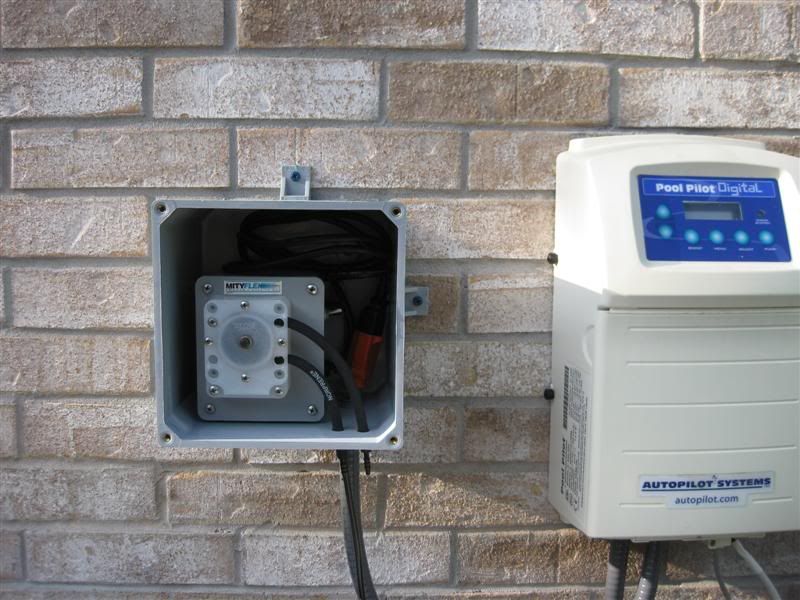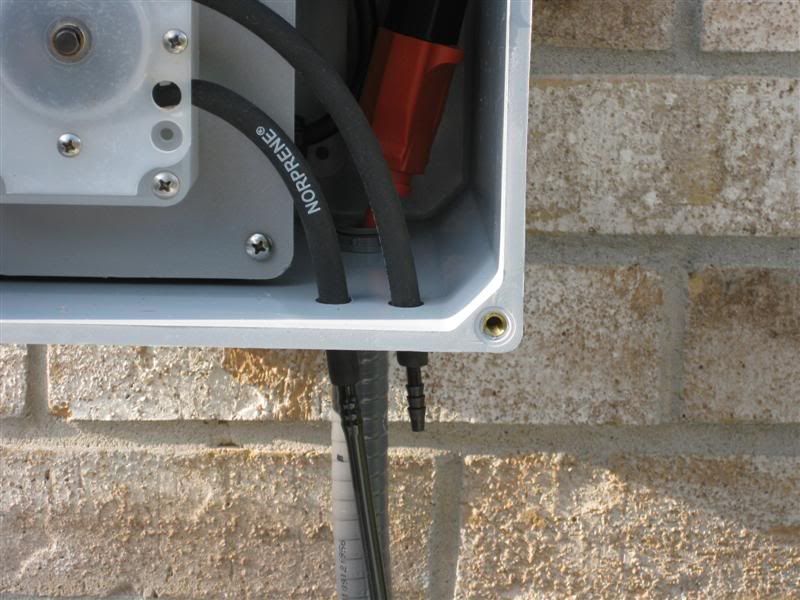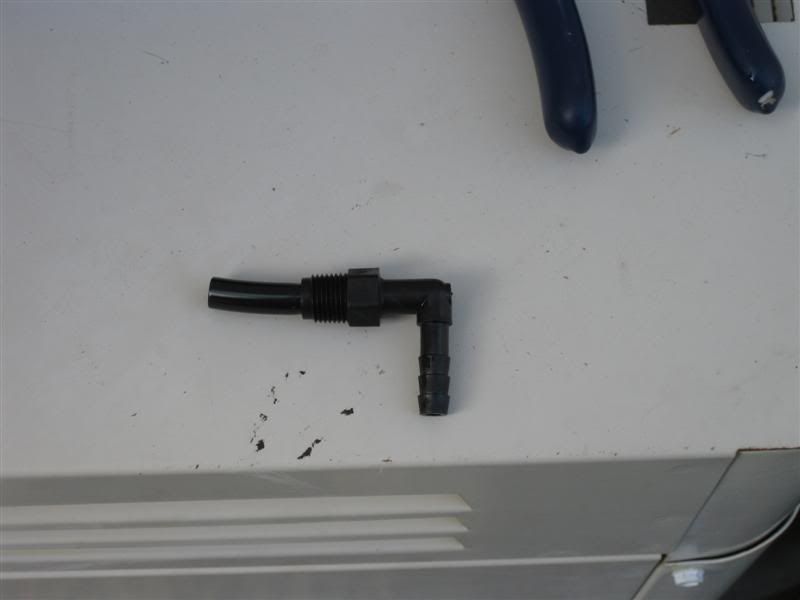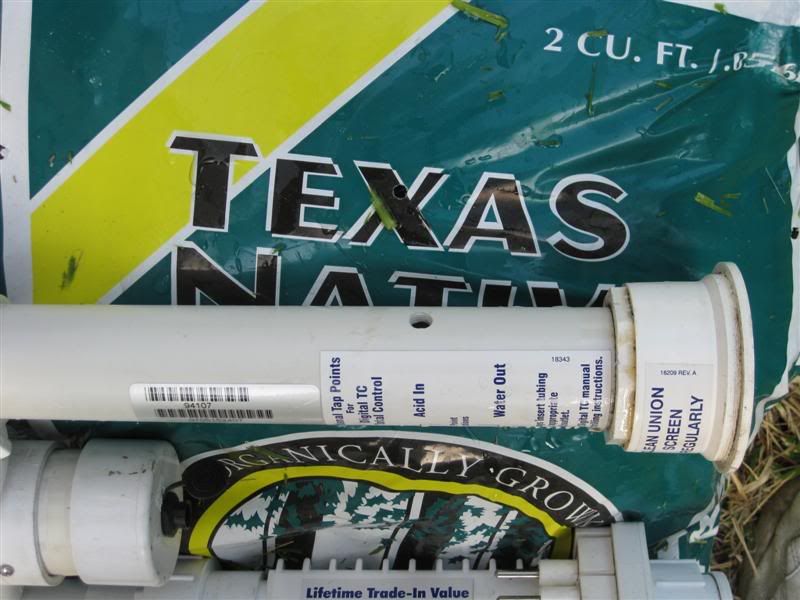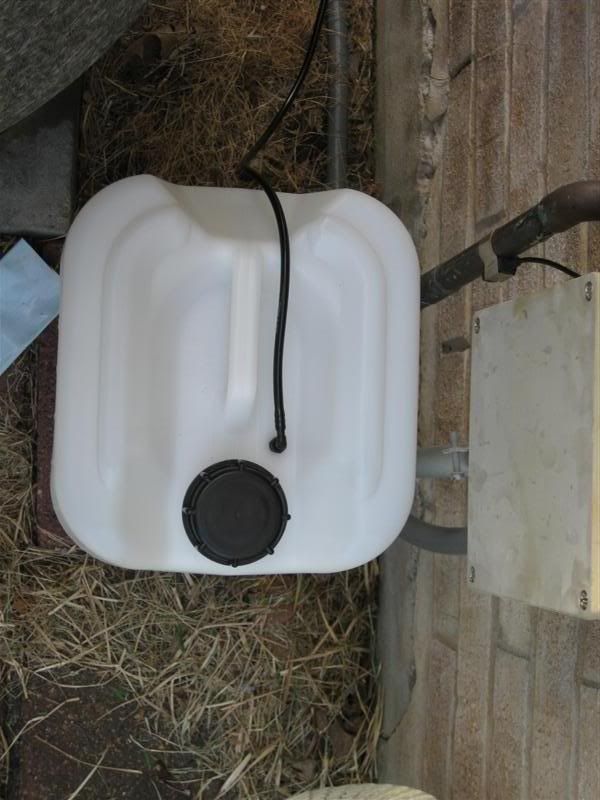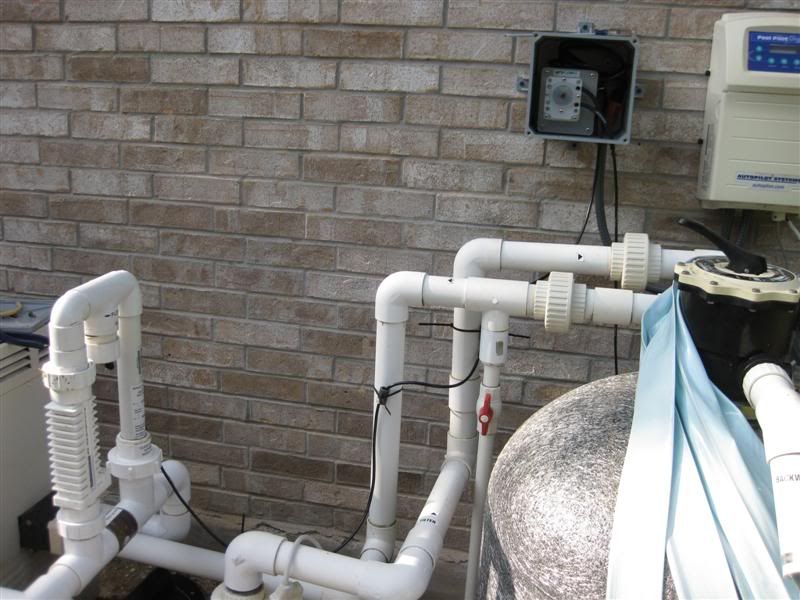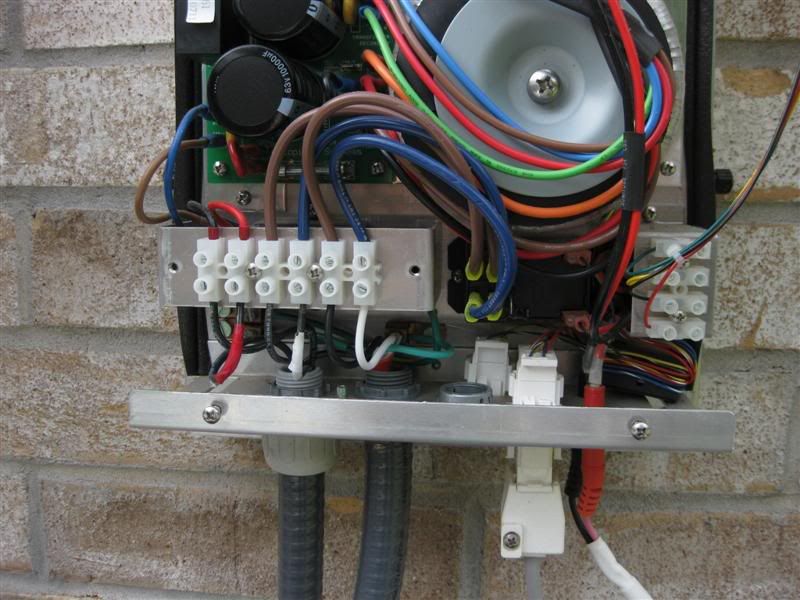I've been thinking of adding a pump for acid injection into my pool.
I need to inject about 1 liter of acid per week. I've been trying to figure out how best to do this?
Initially I thought of injecting it into the skimmer basket of the main pool pump when it is running on high. I could inject at such a low amount that the dilution with the water won't affect the pump or plumbing. However, I would need to somehow ensure that there could be no injection if the pump was not running. This could be done with a simple solenoid off the pump switch to inject the acid. Not sure I really like this idea.
I could inject it into the pool return line. At this point I would just hook up the acid injection into the pool return line then put the peristaltic pump on a timer and let it inject away. If the pump was not running I don't think it would affect anything as it would just be in the PVC pipe of the pool return line.
I could hook it up to the autopilot pump control and inject prior to the chlorine cell, just like AutoPilot would do if I had their version of it. By doing this I know that the pump is running, because the AutoPilot is powered only when the low speed pump is running. I kind of like this as it ensures that the injection wont happen unless the pump is running, it will inject post pump, filter, heater. It will inject pre spa return, but I don't run the pump on low when using the spa. I think I like this the best of all.
No matter which way I go, I need to understand how the pump injects the proper amount then stops. I'm not familiar with the pumps so don't know how they work. Do they just run at what ever speed they are set at, then you use power to turn them on and off? Can you set them to inject a given amount of solution, then stop until the power turns on again? Is it totally pump specific? How would this work?
Does any of this make sense?
thanks,
I need to inject about 1 liter of acid per week. I've been trying to figure out how best to do this?
Initially I thought of injecting it into the skimmer basket of the main pool pump when it is running on high. I could inject at such a low amount that the dilution with the water won't affect the pump or plumbing. However, I would need to somehow ensure that there could be no injection if the pump was not running. This could be done with a simple solenoid off the pump switch to inject the acid. Not sure I really like this idea.
I could inject it into the pool return line. At this point I would just hook up the acid injection into the pool return line then put the peristaltic pump on a timer and let it inject away. If the pump was not running I don't think it would affect anything as it would just be in the PVC pipe of the pool return line.
I could hook it up to the autopilot pump control and inject prior to the chlorine cell, just like AutoPilot would do if I had their version of it. By doing this I know that the pump is running, because the AutoPilot is powered only when the low speed pump is running. I kind of like this as it ensures that the injection wont happen unless the pump is running, it will inject post pump, filter, heater. It will inject pre spa return, but I don't run the pump on low when using the spa. I think I like this the best of all.
No matter which way I go, I need to understand how the pump injects the proper amount then stops. I'm not familiar with the pumps so don't know how they work. Do they just run at what ever speed they are set at, then you use power to turn them on and off? Can you set them to inject a given amount of solution, then stop until the power turns on again? Is it totally pump specific? How would this work?
Does any of this make sense?
thanks,


